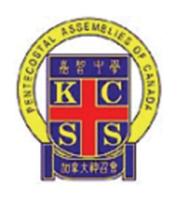| Language Policy |
Under the instructions of the Education Bureau, all subjects from S.1 to S.6 are taught in Chinese except English Language. 10% of lesson time of non-language subjects will be allocated to conduct English enrichment program through the collaboration of non-language subjects and English Language subject teachers. |
| Learning and Teaching Strategies |
Teaching strategies:<br>1. Emphasize catering for learners' diversity through streaming.<br>2. Emphasize cooperative learning to facilitate mutual interaction.<br>3. Emphasize the strategy of "many activities and fast feedback".<br>4. Emphasize assessment for learning.<br>5. Develop platform for electronic teaching and learning.<br>6. Implement small class teaching.<br>7. Cater for learner diversity.<br>Learning strategies:<br>1. Develop learning habits in junior forms. <br>2. Develop high order thinking in senior forms.<br>3. Cater for learners' diversity through elite classes, remedial classes and tutorials, etc. |
| School-based curriculum |
1. Electives: 2X and 3X. Students can select two or three subjects out of ten, or ApL courses offered by external institutes.<br> 2. Curriculum highlights: Offering a diversified fundamental curriculum<br> (a) Bridge junior and senior curriculum; <br> (b) Cultivate multiple intelligence: Students must choose two multiple intelligence courses each year.<br>3. Design school-based curricula, such as Chinese and English reading schemes, language arts, Information Technology and Design, Technology and Life and Life Education, etc.<br>4. Promote extensive reading. |
| Approach to Catering for Learner Diversity |
Catering for student diversity through a whole-school approach: <br>1. We provide our students with Chinese, English, and Mathematics enrichment courses. <br>2. Nurturing Programme ensures every student meets the school's academic requirement. <br>3. We carry out teaching in groups to enhance the training for every individual student.<br>4. We provide elite classes and remedial classes.<br>5. We recruit university students to provide free after-school tutorial lessons to students.<br>6. Form 5 and 6 elite students scheme in order to improve grades of elite students. |
| Approach to Integrated Education |
The Student Support Team, under the leadership of the Vice Principal, is composed of the Heads of the Discipline Committee and Guidance Committee, Special Educational Needs Coordinator (SENCO) and Special Educational Needs Support Teacher (SENST). Adopting a whole-school approach, the school has utilized the Learning Support Grant to provide Tier-1 to Tier-3 support to students with special educational needs (SEN) and arrange counselling groups, speech therapy and individual education plans (IEP). There are also after-school study groups for students who would have particular learning needs and require additional support. A majority of the teachers have been trained to effectively use diversified strategies to take care of SEN students and cater for their various needs. |
| Education Support for Non-Chinese Speaking (NCS) Students |
|
| Home-School Co-operation |
Parent-teacher Association: <br>1. In order to strengthen the connection between parents and teachers, we develop our cooperative relationship through various meetings and activities. In the end, we can work for the same goal - improving students' academic and moral standard.<br>2. Different types of parent-teacher activities are carried out. For example, seminars, workshops, interest groups, family picnics, parent-teacher gatherings and public welfare activities. |
| School Ethos |
To cultivate a caring campus with a 5A culture: Acceptance, Affirmation, Amity, Adoration, and Aspiration.<br>1. Qualities of Ka-Chians: "Grateful in All Things, Helpful to Serve Others, Mindful of Self-Discipline, Soulful with Gifts and talents."<br>2. Caring campus: Letters to the principal, meeting with the principal, whole-school award schemes, pastoral care for all, ceremonies of growth, guidance workshop, and individual education plan. <br>3. Caring class: form association, double class teachers, self-discipline plan, character building form association activities, model class. <br>4. Caring culture: a post for each, student leadership scheme, volunteering work, leadership training programs. |
| School Development Plan |
1. Take care of learning diversity and promote student learning.<br>2. Promote value education and construct positive campus culture. |
| Teacher Professional Training and Development |
Our school develops a professional and outstanding teaching team. We emphasize the culture of collaborative lesson planning, peer observation and evaluation. We also focus on team building and spiritual wellness of our teachers, and organizing various teaching sharing sessions for different subjects and forms. Our school will participate in peer sharing and partnership schemes with the Education Bureau and other institutions, in order to facilitate a good connection with schools in Mainland China. |
| Life-wide Learning |
1. "Multiple Intelligence Institute".<br>2. Implement "Uniform Groups Students Service Team" leadership training scheme.<br>3. Uniformed groups, numerous sports teams.<br>4. Organize student associations like House Committees. |
